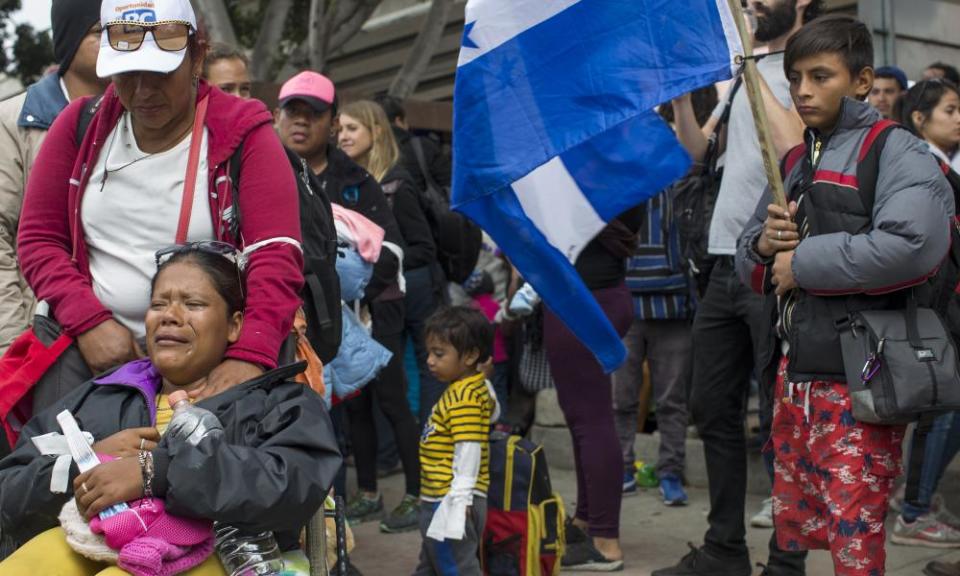Central Americans flee homes in record numbers: 'The level of violence is brutal'

The UN has reported an alarming spike in the number of asylum seekers and refugees fleeing violence and persecution in Central America, urging the international community to take steps to meet the region’s “huge” needs.
The number of asylum seekers and refugees who had abandoned the region shot up from about 18,000 in 2011 to 294,000 at the end of last year, the UN’s refugee agency, UNHCR, announced. That number grew 58% last year alone.
The UNHCR said the number of Central American applications for refugee status had also risen sharply. Of the 350,000 applications between 2011 and 2017, 130,500 – nearly 40% – were filed last year.
Francesa Fontanini, a Mexico-based UNHCR spokeswoman, said those being displaced were largely seeking shelter from rampant gang violence in what is one of the world’s murderous regions.
Central America was last year home to four of the world’s 50 deadliest cities while Washington’s controversial deportation of Central Americans has been blamed for exacerbating the problem.
“The people who are coming are saying that the level of violence is brutal – they are basically confined to their own houses because there is a lack of freedom. It is very dangerous to go to school, to go to church, to move around,” Fontanini said. “They are living in very traumatized and violent circumstances.”
Fontanini said most of those seeking shelter were Hondurans and Salvadorans but the number of Guatemalans had been rising since last year. Mexico’s role in the refugee crisis was also changing.
“We cannot talk any more about Mexico as a country of transit. It is definitely a country of destination as well,” said Fontanini, pointing to the number of asylum claims which rose from around 9,000 in 2016 to 14,000 last year.
Fontanini said the complexity of the problems facing Central American nations such as El Salvador and Honduras meant there was no short-term fix that would end the flow of asylum seekers: “So we need the states who are receiving these people to invest in longer-term solutions.”

 Yahoo News
Yahoo News 